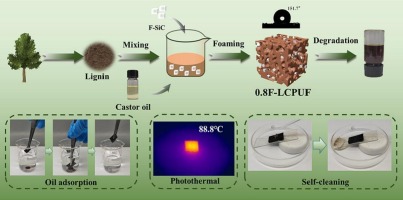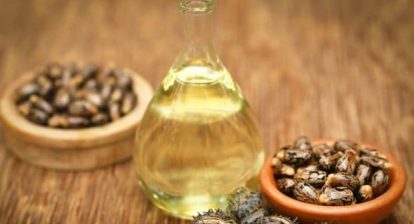Oil spills are a major concern for the global oil industry. Large-scale oil spills can cause disasters, affect the environment, ecology and infrastructure, and even influence human health [1]. With substantial oily wastewater discharged by factories and residences as well as the frequent occurrence of crude oil leakage accidents on the sea, It was important to solve the oil pollution in water [[2], [3], [4], [5]]. With the rapid development of the petroleum and chemical industries, a large amount of oily wastewater has been generated. The removal of oil contamination from oily wastewater to obtain clean water has become a worldwide focus of concern. There is an urgent need to propose practical solutions for the development of sustainable oil-water separation materials [6]. Compared with traditional oil spill remediation techniques, adsorbent materials have been widely adopted in the oil-water separation field because of their effectiveness, low cost and simple operation. There are many types of adsorbents available today, such as porous oxides [7], zeolites [8], activated carbon [9], aerogel foams [10], and polymer foams [11], among which foams have attracted strong interests due to their ability to not only separate oil from water but also store oil. The foams also have higher strength, larger permeation flux, better antifouling properties and higher adsorption capacity.
Currently, commercialized oil-absorbing materials are still predominantly petroleum-based, non-renewable and unsustainable [12]. Future research should focus on environmentally friendly materials [13]. There are many advantages in terms of biomass materials, such as environmentally friendly, easy modification, low cost, renewable and abundant availability, which posed great interest to be utilized for oil/water separation [14,15]. Many plants are rich in lignin. Lignin contains 3D network structure that has many chemical functional groups, such as phenolic hydroxyl group, alcohol hydroxyl group [16], and carboxyl group. Commercial utilization of lignin is still low [17]. There are many previous examples where we have used lignin to synthesize polyurethane foam. To achieve good photo-thermal properties, Ma et al. [18]. incorporated carbon nanotubes into lignin-based polyurethane foams which were able to adsorb crude oil the weight of which was six times to the original foams when exposed to sunlight. Zhong et al. [19] added Fe3O4 to lignin-based foams to obtain magnetic foams combined with good oil-water properties for separating oil from water. Wu et al. [20] produced matrix superhydrophobic foams by adding fluorinated SiO2. 99 % was achieved in terms of oil-water separation efficiency of the foams. Castor oil (CO) is considered as a promising alternative to petroleum derived aliphatics due to its non-volatility, abundance and biodegradability [21]. By adding castor oil to polyurethane foam, Schio et al. [22] enabled the foam to have higher porosity, mechanical properties and adsorption potential. Lee et al. [23] added nanocellulose to castor oil-based polyurethane foams so as to enhance the mechanical and thermal performance of the foams and maintained their low density and high dimensional stability. Therefore, we were supposed to make lignin and castor oil-based polyurethane foams, which have highly efficient oil-water separation and high bio-based content.
Nano-SiC which is formed by the burning of quartz sand, petroleum coke (or coal coke), wood chips can effectively capture photons and convert them into thermal energy [24]. In this study, matrix superhydrophobic polyurethane foam based on lignin and castor oil(LCPUF) with photothermal properties was prepared by a one-step foaming strategy. SiC was reacted with FTDS to make it to be superhydrophobic F-SiC. Superhydrophobicity improves oil-water separation efficiency [25]. To obtain LCPUF, the lignin was first liquefied in a polyol. Secondly, the obtained liquefied lignin was homogeneously mixed with castor oil and F-SiC. At last, the mixture was reacted with hexamethylene diisocyanate (HDI). The materials in this study have the advantage of being bio-based, biodegradable, matrix superhydrophobicity, simple process by one-step foaming method, and in line with the future trend of green development. The obtained polyurethane foams with both superhydrophobic and photothermal properties were studied for oil/water separations.





